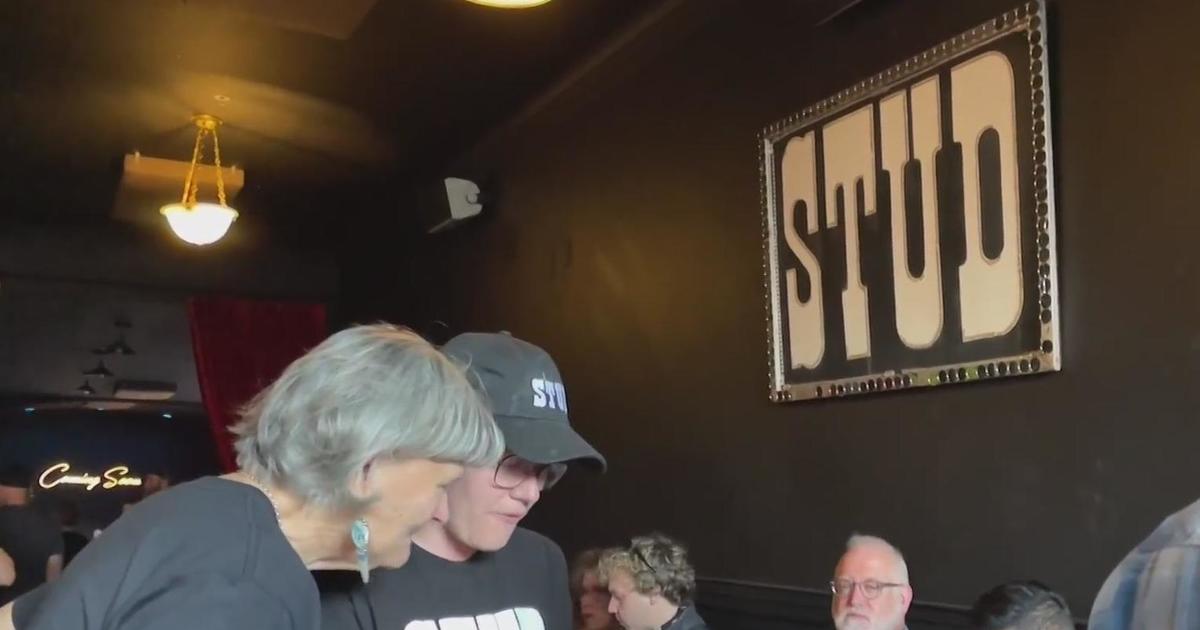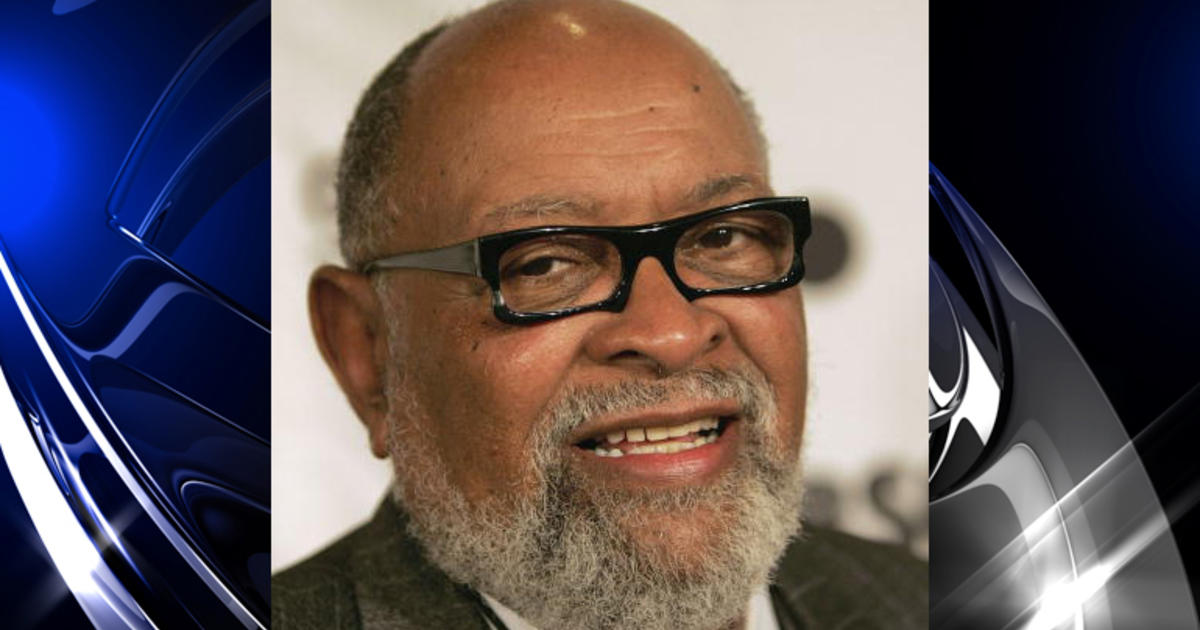San Francisco Treasure: The Lost Carousel Ballroom Concert of Johnny Cash
SAN FRANCISCO (KPIX) -- An unearthed sonic time capsule is giving music fans a chance to experience a lost chapter of Bay Area history involving a forgotten concert by a country music icon.
The unique recording captured a fleeting moment in San Francisco, when the legendary Johnny Cash, an infamous sound man for the Grateful Dead, and hundreds of hippies gathered under one roof.
That roof still stands.
At the corner of Market and Van Ness in San Francisco is SVN West, the location a huge building that currently houses the Immersive Van Gogh exhibit.
But more than half a century ago, it was home to a dance palace known as the Carousel Ballroom.
During the 1960s, on the 2nd floor, the young people flocked to hear rock music. The space could hold roughly 3,000 attendees. On one evening in '68, about 700 hippies gathered. It was a Wednesday night and the suggested ticket price was $3.
At that point in time, the Carousel was run as a "social and music experiment" by a cooperative of local psychedelic groups, including the Grateful Dead, Jefferson Airplane, Quicksilver Messenger Service and Big Brother & the Holding Company.
On April 24th, 1968, the opening act was Dan Hicks and his Hot Licks, who warmed up the crowd for the main event: the great Johnny Cash.
KPIX 5 could find no photographs or film of the performance. But thanks to an all-volunteer effort, audio recorded that evening documents the historic event.
"They're a chunk of American cultural history," said Grateful Dead historian Dennis McNally.
"It was just a very special piece of magic," noted Johnny Cash's son, John Carter Cash.
"We like to call it a time machine, because it really transports at least your ears back to those shows," added veterinarian Dr. Starfinder Stanley.
Dr. Stanley is the son of the late soundman Owsley Stanley, who is known by many as the father of the modern rock and roll sound system.
It's unclear why Cash took the gig. 1967 was a horrifying year for the iconic musician and songwriter. He was caught in the grips of drug addiction, suffering in such deep despair that he actually wanted to die.
But the following year, Cash married the love of his life: the phenomenal singer and songwriter June Carter.
In 1968, everything changed. Cash kicked the habit and regained his health. In February, he recorded what would become a landmark live album at Folsom Prison. On March 1, he married June at a ceremony in Kentucky.
The following month, Cash, his new wife June, and his backing band known as the Tennessee Three ended up in San Francisco at the Carousel Ballroom. The Tennessee Three included guitarist Luther Perkins, W.S. Holland on drums, and Marshall Grant on bass. The show was unusual.
"I knew there was something specifically different about this show in particular," said John Carter Cash.
John Carter Cash is the only child of Johnny and June. When he heard the lost recording, he was struck by how it sounded. The crowd was smaller than what his father was used to. It was a very intimate performance.
But there was another critical contributing factor to the unique recording: the participation of the legendary sound engineer Owsley Stanley, also known as Bear.
"These were two strong personalities and highly creative forces. And they come together over this record," recounted McNally.
Bear was the first sound man for the Grateful Dead. He was also a chemist renowned for making the psychedelic drug known as LSD.
"He made the best LSD when it was legal, and also when it wasn't... perhaps," said McNally.
Possession of LSD was made illegal in the United States on October 24, 1968, which is half a year after the Cash's performance at the Carousel.
For Bear, LSD played a role in capturing the perfect sound of a live concert. His quest was to capture the sound that the musicians made and that the audience was experiencing.
Bear did not consider himself a recording engineer. He began recording the concerts in order to study the sound, and to improve his techniques. The sound man called these recordings his "sonic journals."
Bear accumulated about 1300 reels of soundboard recordings of all the bands that played through his sound system. They became his working diaries.
After a show, he often would have the Dead listen to the recording, asking the band members if the sound was what they intended the audience to hear, and then tweak his sound system in order to better perfect it.
"He was trying to put you in the brain of the musician," explained Dr. Stanley.
KPIX 5 caught up with Dr. Stanley at a veterinary clinic in San Francisco, where he was performing acupuncture on an older yellow lab.
Dr. Stanley is the founder of "House Calls of the Wild," where he travels to conduct integrative medicine, at clinics but also in private homes. After tending to his patients, Dr. Stanley sat down with KPIX 5 to discuss his father's legacy.
He told us that during one acid trip, his father saw how sound waves reverberated around a room. It showed him how traditional stereo sound systems did not do the trick. The experience inspired him to create a sound system that was revolutionary in its approach and clarity.
"His objective was to mix live sound," said the vet. But his recordings inspired others.
"Owsley's style of recording set the standard for years and years to come," noted John Carter Cash.
Owsley recorded the Cash concert using a Nagra audio recorder which just had two tracks. When you hear one of his sonic journals, it's not a traditional "stereo" recording where the sound on the right is the same as the sound on the left. Bear's approach was to have a contiguous sound that spread the music very evenly through the room. That's why he would prefer to push all the speakers together - front and center.
With the Johnny Cash Carousel recording, you have to hear it to understand the method. The result is as if you were plunked right in front of the Carousel Ballroom's stage more than 50 years ago.
It is the closest thing that you will get to hopping in a time machine and going back in time.
At the Ballroom, Johnny was on the left-hand side of the stage and the Tennessee Three were located on the right. The Owsley technique provides a spatial picture of what the audience heard.
"It sets my father's voice apart. I believe it's probably just as close to what it really would have been like if you were in the room that night," said John Carter Cash.
When engineers involved in the project tried to remix the tapes into a traditional recording, they lost their crystal clarity.
In 2011, Bear died in a car crash. His children created the nonprofit Owsley Stanley Foundation in his honor. The main goal: to preserve all of their father's historic old tapes by digitizing them. It's a race against time. Magnetic analog tapes have about a 50-year shelf life, and the clock is ticking.
"It's something that we just can't let evaporate. Unfortunately, reel-to-reel tapes are little iron oxide particles glued to plastic. It falls apart. It deteriorates," explained Dr. Stanley.
It's an all-volunteer effort. No one involved in the preservation efforts gets paid. The effort is funded by donations and the sale of some sonic journals, including the Johnny Cash Carousel Ballroom Concert.
On January 14th, a special edition vinyl box set of the Cash concert will be available. The vinyl versions are a rare all-analog production mastered directly from the original analog source tapes. To make them, San Francisco's Paul Stubblebine, a colleague of Bear's, went back to the original vault tape and mastered them on all-analog equipment.
As for the digital releases, they are mastered by Jeffrey Norman at Mockingbird Mastering. Before they are mastered, they all "re-clocked" by Plangent Processes to remove the timing disorders commonly known as "wow and flutter."
If you buy an album, the proceeds get split between the artists and the Foundation. The Foundation plows all its proceeds back into digitizing the remaining tapes. So far, 800 tapes have been digitized including the live recordings of the Allman Brothers, Hot Tuna, Ali Akbar Khan, Tim Buckley, and Doc & Merle Watson.
In the collection, hundreds more need to get transferred, including recordings by the Dead, Jefferson Airplane, and Janis Joplin.
KPIX News would like to thank Rosie McGee, who provided a photograph of Bear, Amelia Davis for the Jim Marshall photographs of Johnny Cash and June Carter Cash, and William Siemens, a founding board member of the Owsley Stanley Foundation and a friend of Bear's.



